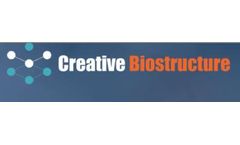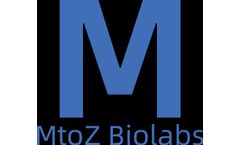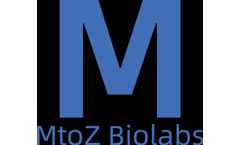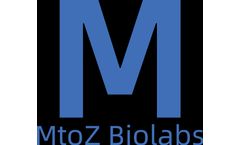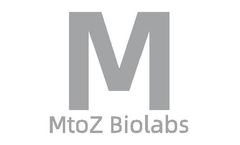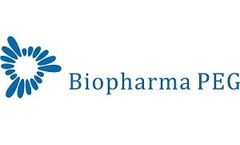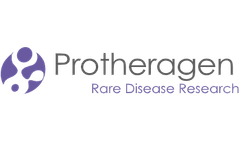Pharmacokinetic Modeling Physiology Based Pharmacokinetic Articles & Analysis: Older
66 articles found
Pharmacokinetics (PK) and pharmacodynamics (PD) are two fundamental pillars in the field of pharmacology and drug development. Understanding their intricate interplay is essential for determining the efficacy and safety of therapeutic compounds. When studied in living organisms, this relationship is referred to as in vivo PK/PD, a discipline that provides invaluable insights into drug behavior ...
Liposomes, spherical vesicles composed of one or more phospholipid bilayers, have garnered significant attention in the field of drug delivery due to their unique properties. These nanocarriers offer a promising approach to overcome challenges associated with traditional drug administration, enhancing therapeutic efficacy while minimizing side effects. This article will delve into the role of ...
Clinical trials are the backbone of modern medicine, responsible for bringing innovative, safe, and efficient treatments to market after rigorous testing and evaluation. However, the conventional process of conducting these trials has often been long, expensive, and fraught with inefficiencies¹. The advent of predictive analytics is reshaping the landscape of clinical trials, ushering in a ...
Peptidomimetics are structural analogs of peptides or proteins that mimic their biological activities. They are designed to overcome limitations associated with peptides, such as poor stability and bioavailability by preserving or enhancing their functions. Peptidomimetic development involves the design and synthesis of molecules that mimic three-dimensional structures and functional groups of ...
The scientific realm behind the development and evaluation of therapeutic drugs, pesticides, industrial and environmental chemicals profoundly relies on a field of research called Pharmacokinetic/Toxicokinetic (PK/TK) studies. These investigations provide substantial information on how an organism affects a substance, delineating vital zones of absorption, distribution, metabolism, and excretion. ...
Therapeutic monoclonal antibodies (mAbs) are a class of antibody drugs that are highly uniform and have pharmacological effects against a single epitope obtained through molecular biology. In the process of new drug development, the study of pharmacokinetics is of great significance. The result can be used to guide the screening and development of drugs, and support the evaluation of their ...
Glycosylation impurities are a type of chemical commonly encountered in biochemical, medical, and pharmaceutical chemistry research. The presence of these impurities can affect the efficacy, safety, and stability of drugs. Therefore, the detection and analysis of glycosylation impurities are crucial in ensuring the quality and therapeutic effectiveness of pharmaceutical products.What are ...
Antibody-drug conjugates (ADCs) are a new class of drugs that combine the advantages of both antibodies and small molecule toxins. Compared with traditional cytotoxins, ADCs have the advantages of strong targeting, less toxic side effects, etc. They can accurately target tumor cells, reduce side effects, and improve the therapeutic effect.ADC drugs are mainly composed of monoclonal antibodies, ...
Polyethylene glycol (PEG) derivatives have become pivotal in the pharmaceutical industry, revolutionizing drug delivery systems and enhancing the efficacy of various therapeutic agents. The unique properties of PEG derivatives, including their biocompatibility and ability to modify the solubility, stability, and bioavailability of drugs, make them indispensable in modern pharmacology. This ...
Antibody drug glycosylation analysis is a critical bio-pharmaceutical analysis method, specifically used to evaluate and monitor the glycan structures on antibody drugs. Glycosylation analysis is crucial for ensuring the safety, efficacy, and consistency of drugs, as the structure and composition of glycans directly influence the bioactivity and pharmacokinetic properties of antibody ...
The inspection items of Antibody-Drug Conjugates (ADCs) usually include a series of tests to evaluate the quality, stability, efficacy, and safety of ADCs. These inspection items may include:1. Quality Control TestsEvaluating the purity, impurity level, antibody-drug binding ratio, etc., of ADCs.2. Bioactivity TestsDetermining the recognition ability and killing effect of ADCs on target cells.3. ...
Since antibody-drug conjugates (ADCs) have the molecular characteristics of both small molecule and macromolecule therapeutic drugs, when choosing analytical methods, the typical ones used for both should all be considered. There are many different molecules in ADCs, and the difference between these molecules lies in the drug-to-antibody ratio (DAR) value and/or the site where the antibody binds ...
Nanobodies, also known as single-domain antibodies, have gained much attention in recent years due to their potential in various biomedical applications including drug delivery systems. Nanobodies are small antibody fragments derived from naturally occurring heavy-chain antibodies found in camelids, such as camels and llamas. They are composed of a single monomeric variable domain, making them ...
Watertown, MA, July 22, 2024 – Biopharma PEG, a top supplier of PEG derivatives, is excited to introduce its new line of monodispersed PEGs. These specially sized polymers are designed to improve the stability and delivery of proteins and peptides in drugs. They are essential for Antibody-Drug Conjugate (ADC) linkers, Proteolysis Targeting Chimeras (PROTAC) linkers, and PEGylated proteins ...
Introduction In the ever-evolving landscape of drug delivery systems, nanoformulation stands out as a revolutionary approach. Nanoformulation leverages nanotechnology to create drug delivery systems that can improve the efficacy, reduce side effects, and precisely target disease sites. This cutting-edge technology has garnered significant attention from researchers and pharmaceutical companies ...
The development of new and effective drugs is a complex and multifaceted process that requires the collaboration of scientists from diverse fields, including chemistry, biology, and computational modeling. At the heart of this endeavor lies the art of drug design - the strategic and methodical approach to creating molecules that can effectively target and modulate biological pathways to treat ...
Polymers play an important role in the biomedical field, and polyethylene glycol (PEG) and its derivatives are among the multifunctional polymers that have attracted much attention. PEG is a synthetic macromolecule with a linear structure consisting of glycol units (-CH2CH2O-) repeatedly linked. Its unique properties give PEG a wide range of applications. PEG is soluble in organic solvents and ...
The development of monoclonal antibodies (mAbs) has completely transformed the field of medicine, providing targeted antidotes against a wide range of diseases, including cancer, autoimmune and infectious diseases. These therapeutic antibodies aim to specifically target antigens on the surface of cells and bind to them, leading to acidic reactions that result in the destruction of target cells. ...
Rare diseases, also known as orphan diseases, affect a small percentage of the population, making them particularly challenging to diagnose and treat. However, thanks to advancements in medical research and technology, significant progress has been made in the field of rare disease research, from developing accurate diagnostic tools to making effective small-molecule drugs. One of the biggest ...
In the vast and intricate world of biology, the development of proteins and antibodies stands as a crucial field of study, driving advancements in medicine, biotechnology, and beyond. From the fundamental building blocks of life to the complex molecules that defend our bodies, these remarkable biomolecules hold the key to unlocking new frontiers in scientific understanding and practical ...


